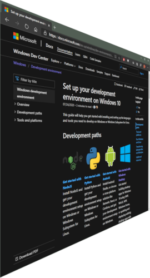
Did you know Gmail was born from a hackathon project? Same goes for LinkedIn’s “Year in Review.” Companies of all sizes and from all industries embrace hackathons as a way to foster innovation and collaboration — even the NBA does it. Silicon Valley is home to a number of famous projects and startups that were born out of hackathons, and at Okta, we’ve also had our share of projects stem from hackathons that have improved both our product and infrastructure.
Sometimes, CTOs and engineers view hackathons as unproductive. However, hackathons can drive immense value back to the business. Executed properly, hackathons should enable your engineers to learn about new technology, try new ideas, and allow their imaginations to run wild. But, in order to ensure they don’t simply chase new technology that won’t be applicable to your team down the line, you need to find a way to discover intrinsic value in the projects they work on at these events. Here are some tips on how to strike the right balance between freedom and creativity at your next hackathon.
Establish ground rules to keep things on track
While hackathons can provide value by leading to new, useful projects, they also take time away from day-to-day operations, presenting a conundrum for management. Developers sometimes hesitate to participate; often, they have a hard time planning for the long-term and want to focus on near-term projects that deliver quick results. As a ground rule, managers should be strongly encouraged to allow time for this creativity, which will likely result in headspace for developers to brainstorm beyond their day-to-day projects. Give developers the freedom to think beyond their normal scope of time, encourage them to work on projects that go beyond their area of expertise and watch them go big!
Another prudent ground rule is teamwork. Just like any significant project or undertaking, it shouldn’t be an individual effort. Although solo hacks can sometimes showcase amazing technology, hackathons are more impactful when a team of engineers with different skill sets stands behind a project. Having said that, be mindful to keep teams to no larger than five. This will ensure everyone can work hands-on and purposefully within their team. At the end of the day, a hackathon should provide a channel for engineers to form teams with those they don’t typically work with or might not know as well.
Create a sound voting process
Establish a voting process for your hackathon at the start and stick to it. Also, create multiple categories of competition that different groups of judges can assess so that there are multiple goals and awards for your teams to work toward.
Having a tiered competition that is assessed by an expert panel of judges in the first round will also allow for meaningful discussion with participants on how their projects could turn into real, valuable assets for the company. This discussion can provide valuable feedback to the teams and help them course-correct or let them know they’re going in the right direction. It also helps to justify a day or two taken from engineers’ usual day-to-day activities, as these conversations about how to implement a project can lead to notable product upgrades or feature enhancements in the long run.
As the hackathon progresses to the championship round to determine the final winner, have the finalists from each category present to the whole company to ensure those voting have context around the hackathon and competing projects. Encourage all of your employees to vote for the winner as part of their responsibility as a member of the organization: no matter if they’re in sales, marketing or human resources, their involvement could lead to a new and useful project for the company.
Encourage creative and attainable projects
Encourage working on a creative project that maps back to business goals to ensure engineers can have fun while also working on potentially groundbreaking ideas. To get the creative juices flowing, give your team prompts a week or so in advance to get them thinking in advance about potential creations.
One of the winning projects from Okta’s 2018 hackathon involved correlating hardware-based signals to process authentication. The team showcased their project by letting an engineer through the front door of Okta using a badge reader but also requiring a breathalyzer test before allowing any account access. The concept of incorporating physical factors into Okta’s multi-factor authentication process was both creative and valuable to the business, which led to this particular team winning in the championship round. While having some fun, the team came up with a framework to make physical authentication successful and did so in a completely unique and creative way.
Turn a hack into fruition!
Nothing motivates engineers more than seeing their hacks materialize into actual products that fit into company strategy and product roadmap. If you have pre-assembled the hackathon backlog and helped manage the ideation process, you should have some hacks potentially worth productizing at the end. At the end of each hackathon, try to make sure at least one product feeds into your product roadmap. This both demonstrates the value of your hackday to senior management and it keeps developers energized and motivated for future events.
Ensuring you have a clear plan in mind to corral the hacks and assist the production process of a hackathon will go a long way in making it successful. Above all, remember to reward creativity but always keep in mind the actual implementation of the hacks as real-world features. Your engineers will eagerly await seeing their products and ideas in use and knowing it’s a possibility will yield higher-value results overall.





